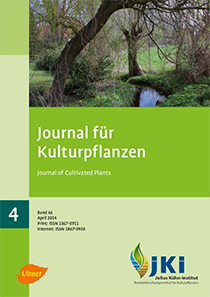Infection tests of horse chestnut trees with <em>Pseudomonas syringae</em> pv. <em>aesculi</em>
Keywords:
Horse chestnut, Bark disease, Pseudomonas syringae pv. aesculi, Infection testsAbstract
Trees of about 5 years age of Aesculus hippocastanum L. were planted and infected with Pseudomonas syringae pv. aesculi, the causal agent of the Pseudomonas bark disease of horse chestnut trees. To get knowledge on the infection ways of the pathovar, trees were treated by complete spraying or by watering the root area with bacterial suspensions. In other trees bacteria from agar plate cultures were spread on the bark or the bacteria were brought in the wood through artificial bark wounds. One tree showed already after 3 months the typical dark bark leakages, confirming Koch´s postulates. The other trees sampled after 3 years revealed that the pathovar could be re-isolated only from wound-infected trees and from two weakened or dead trees. Many of the wounds had been compartimentalized and/or totally over-walled, without a re-isolation of the bacterium. An infection via the leaves, the undamaged bark or the roots was not observed. It is assumed that P. syringae pv. aesculi infects A. hippocastanum through wounds.
DOI: 10.5073/JfK.2014.04.02, https://doi.org/10.5073/JfK.2014.04.02
Downloads
Published
Issue
Section
License
The content of the journal is licensed under the Creative Commons Attribution 4.0 License. Any user is free to share and adapt (remix, transform, build upon) the content as long as the original publication is attributed (authors, title, year, journal, issue, pages).
The copyright of the published work remains with the authors. The authors grant the Journal of Cultivated Plants, the Julius Kühn-Institut and the OpenAgrar repository the non-exclusive right to distribute and exploit the work.







